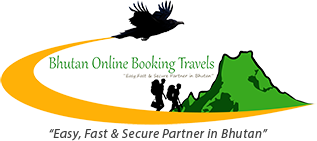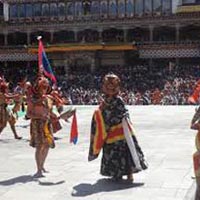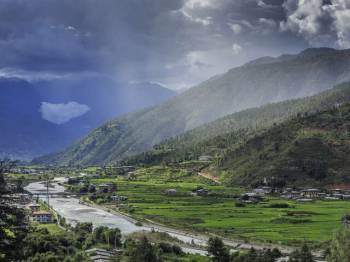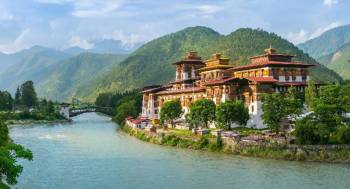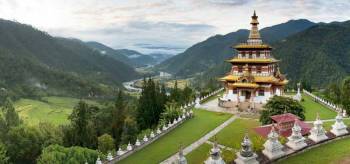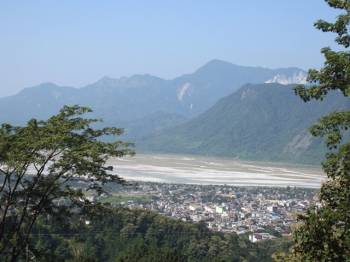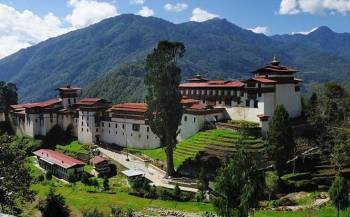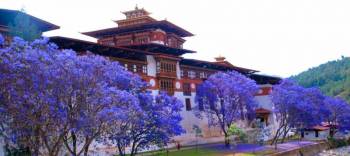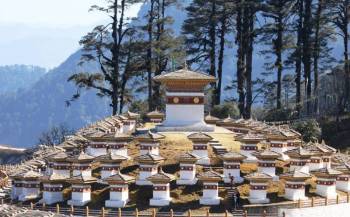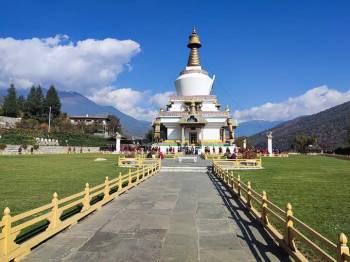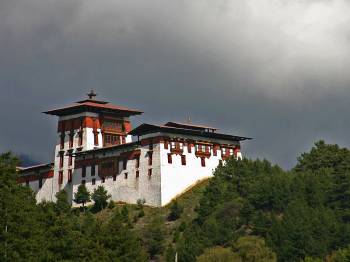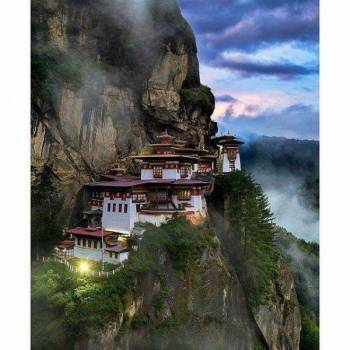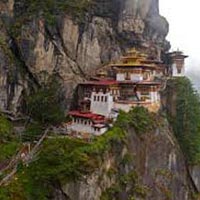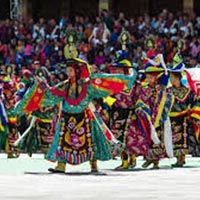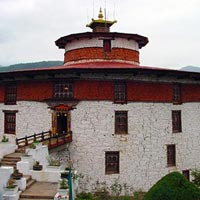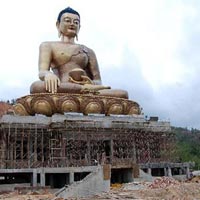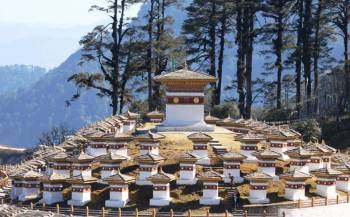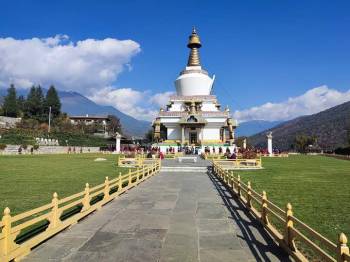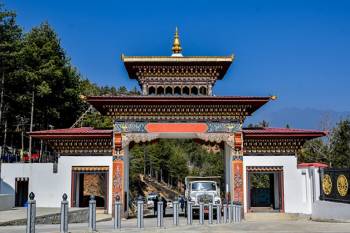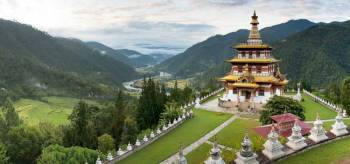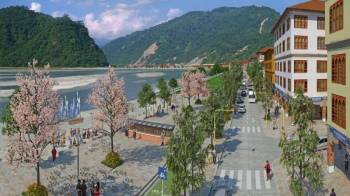Nabji Korphu Festival Tour
Duration : 12 Nights / 13 Days
Destination Covered : Paro, Thimphu, Punakha, Trongsa
Tour Activities : Heritage, Hill Stations & Valleys, Hill Stations & Valleys
Price on Request
Paro, Thimphu and Punakha Tour Overview
Flight ticket
Any drinks in tourist standard restaurant or hotel
Personal expenses
Tips for the guide and diver.
Paro, Thimphu and Punakha Tour Itinerary
Day 1
The flight into the Himalayas is one of the most scenic and breathes taking, with the view of some of the tallest mountains of the world. On your arrival at the Paro international airport, our representative will receive you and transfer to Hotel.
Afternoon: Visit National (Ta Dzong), originally built as Watchtower in 1649 by the first governor of Paro. In was converted into museum by the third king of Bhutan in 1968. Today it houses the fascinating collection of arts, relics, religious thangka paintings and Bhutanese exquisite postage stamps.
Visit Paro Rimpung Dzong as known as the “fortress on the heap of Jewels”. It was built by Zhabdung Ngawang Namgyel the fonder of Bhutan in the year 1646. After visiting the dzong, walk down to a traditional wooden covered bridge. The walk from the dzong to the bridge offers good view of the architecture wonder of the dzong.
Overnight hotel
Afternoon: Visit National (Ta Dzong), originally built as Watchtower in 1649 by the first governor of Paro. In was converted into museum by the third king of Bhutan in 1968. Today it houses the fascinating collection of arts, relics, religious thangka paintings and Bhutanese exquisite postage stamps.
Visit Paro Rimpung Dzong as known as the “fortress on the heap of Jewels”. It was built by Zhabdung Ngawang Namgyel the fonder of Bhutan in the year 1646. After visiting the dzong, walk down to a traditional wooden covered bridge. The walk from the dzong to the bridge offers good view of the architecture wonder of the dzong.
Overnight hotel
Day 2
After Breakfast: Visit Kichu Monastery one of the oldest monastery dated back to 7th century, it is believed in 7th century there was Tibetan king called Songtsen Gampo, he build 108 monasteries of the different parts of demon body to pin her to the earth forever. Kichu monastery is believed to build on the left leg of the demon. In the evening drive to Thimphu, the capital city of Bhutan. The drive will take about hour and half. Lunch in Thimphu
Afternoon: National Institute for Zorig Chusum (Institute for 13 different traditional arts and crafts): Established in 1971 by the Royal Government of Bhutan. It is one of the two institutes in the country that provide training in the 13 traditional arts and crafts.
National Library: Established in 1967 by the Royal Government of Bhutan. Its aim is to collect, preserve, and promote literary works relating to religion, history, philosophy and tradition of the Kingdom.
Textile Museum: the museum was founded in the year 2000 under the Royal Patronage of Her Majesty Ashi Sangay Choden Wangchuk. The general objectives of the museum are, to preserve national textile heritage, document and research on traditional methods and to provide a centre for study and research.
Visit:Tashichho Dzong: means the fortress of glorious religion. The main secretariat building and the throne room of Majesty the king. It is also the summer residence for the His holiness Je Khenpo (Spiritual leader) and central monk body. Overnight hotel
Afternoon: National Institute for Zorig Chusum (Institute for 13 different traditional arts and crafts): Established in 1971 by the Royal Government of Bhutan. It is one of the two institutes in the country that provide training in the 13 traditional arts and crafts.
National Library: Established in 1967 by the Royal Government of Bhutan. Its aim is to collect, preserve, and promote literary works relating to religion, history, philosophy and tradition of the Kingdom.
Textile Museum: the museum was founded in the year 2000 under the Royal Patronage of Her Majesty Ashi Sangay Choden Wangchuk. The general objectives of the museum are, to preserve national textile heritage, document and research on traditional methods and to provide a centre for study and research.
Visit:Tashichho Dzong: means the fortress of glorious religion. The main secretariat building and the throne room of Majesty the king. It is also the summer residence for the His holiness Je Khenpo (Spiritual leader) and central monk body. Overnight hotel
Day 3
After breakfast drive to Punakha over the Dochula pass (3150m). On the clear day you get the breathtaking views of the eastern Himalayan ranges. Another 2hrs drive from the past you will reach to a place called Lobesa. From here take short hike through the rice field to Chimmi Lhakhang, the 15th century monastery built by Lam Ngawang Chogyal on the spot where his cousin Lam Drukpa Kuenley popular known as the divine madman subdued demon. This monastery is also called as the abode of fertility.
Afternoon: Visit Punakha’s Punthang Dechen Phodrang (the names means palace of Great Bliss) Standing on the tongue of the land of land where two rivers, Phochu and Mochu, meet. Punakha Dzong has special significance in Bhutan history. Punakha Dzong was place where Bhutan’s first king, Ugyen Wangchuk was crowned in 1907. It is winter residence for Je Khenpo (spiritual leader) and entire central monk body.
Overnight hotel
Afternoon: Visit Punakha’s Punthang Dechen Phodrang (the names means palace of Great Bliss) Standing on the tongue of the land of land where two rivers, Phochu and Mochu, meet. Punakha Dzong has special significance in Bhutan history. Punakha Dzong was place where Bhutan’s first king, Ugyen Wangchuk was crowned in 1907. It is winter residence for Je Khenpo (spiritual leader) and entire central monk body.
Overnight hotel
Day 4
This part of drive is one of the most scenic; you will be crossing streams, waterfalls, prayer wheels turned by water, yaks with their herders, remote and picturesque villages and lots of birds.
As we approach Pelela pass (3420m/10825ft), you will get the first glimpse of Black mountain ranges. In olden days it was used as border between east and west. Before reaching the pass, we will take right towards the valley of rare and famous Black Necked Cranes. First stop is at the village of and Gangtey (3000m/10100ft), followed by Gangtey Gompa.
The villagers are said to be descendents of about 50 gomchen or lay monks who settled there long time ago. Gangtey Gompa monastic school built in 1613 is the biggest Nyimapa School in the western part of Bhutan. After visiting the monastery hike through the nature trail, this hike will take you through the mixed forest of fir and blue pine. You will come across some settlement; visit one of the farmhouses to see the rural life of Bhutanese peoples. Overnight hotel
As we approach Pelela pass (3420m/10825ft), you will get the first glimpse of Black mountain ranges. In olden days it was used as border between east and west. Before reaching the pass, we will take right towards the valley of rare and famous Black Necked Cranes. First stop is at the village of and Gangtey (3000m/10100ft), followed by Gangtey Gompa.
The villagers are said to be descendents of about 50 gomchen or lay monks who settled there long time ago. Gangtey Gompa monastic school built in 1613 is the biggest Nyimapa School in the western part of Bhutan. After visiting the monastery hike through the nature trail, this hike will take you through the mixed forest of fir and blue pine. You will come across some settlement; visit one of the farmhouses to see the rural life of Bhutanese peoples. Overnight hotel
Day 5
Drive back to connect with the national highway for about 30 minutes. Stop for pictures at the Pelela pass at 3420m/ 10825ft. from the pass, you will descend to through Longthe village, where inhabitants rare sheep and yaks. From the road you will see the clustered village of Rukubji village amid the potato, barley and mustard fields depending on seasons. Next village you will come across is the village of Chendenji. The second king used to spend one night here along with his mules caravans. Just few minutes, the big white stupa modeled out of Syambunath in Nepal built in 19th century.
As we approach Trongsa, we get the great view of Trongsa dzong overlooking the Mangde Chu in the deep valley. Stop at the viewpoint and follow the ancient route to Trongsa. Hike will take about 2 hours to Trongsa dzong.
Built in 17th century, this dzong is the most strategically located dzong in the country. it was said that it took almost 150 years to construct to its full grandeur. The kings were originated from this place. Sometimes the first two kings used to live there in winter.
Visit Ta-Dzong or the watchtower, which was converted to museum in 2008. The museum houses about 244 items used over the years by Wangchuck dynasty.
Overnight hotel
As we approach Trongsa, we get the great view of Trongsa dzong overlooking the Mangde Chu in the deep valley. Stop at the viewpoint and follow the ancient route to Trongsa. Hike will take about 2 hours to Trongsa dzong.
Built in 17th century, this dzong is the most strategically located dzong in the country. it was said that it took almost 150 years to construct to its full grandeur. The kings were originated from this place. Sometimes the first two kings used to live there in winter.
Visit Ta-Dzong or the watchtower, which was converted to museum in 2008. The museum houses about 244 items used over the years by Wangchuck dynasty.
Overnight hotel
Day 6
Morning drive 80km (3hrs) hrs to the south of Trongsa, it’s an interesting drive passing through the settlement of Takse and large expanse of rice terraces in the lower Mangde chu valley. On this drive there is chance for spotting Golden Langur, leaf monkey endemic to Bhutan. Visit Kunga Rabten palace, winter palace for the first two kings of Bhutan, it was from here the first two kings ruled the country. Continue your journey for little more than one hour, you’ll reach the place called Rewtala from where you will take a farmhouse to get to the Korphu village. Korphu is situated on a mountain at the elevation of 1500m. After settling down at the campsite you walk around the village and visit some farmhouse and meet the people who are known for their hospitality. Overnight: Farmhouse
Day 7
Today it is a short downhill walk to the Nabji village, en route visit the Nabji temple located in the middle of paddy field. Inside the temple remains a stone pillar on which Guru Rimpoche, while travelling through Bhutan in the 8th century, brought consensus between the warring king Sindha Raja of Bumthang and king Noeche by imprinting their thumps on each side of the stone. Unique festival is celebrated sometime in early January at the temple ground.
Farmhouse
Farmhouse
Day 8
One of the most interesting rural festivals in the country, you will be entertained by the mask dances, folk dances and also by the clown. Farmhouse
Day 9
After breakfast, we will retrace the journey back to Trongsa and then to Bumthang. After Trongsa, you will drive towards Yontongla 3420m and then to Chmey valley. Stop at Zungey for the textiles and continue towards Bumthang for overnight. Overnight hotel
Day 10
Today it is possible to do walking tour around the Jakar.
After breakfast: Visit Jakar Dzong, according to the legend the site was initially founded in 1549 by the group of lamas when they were looking for the site to built the monastery, they saw big white birds hovering in the air and perched on a spur on the hill. This was interpreted as a good omen, and the hill was chosen for a monastery. Later on in 1667 Chogyal Minjur Tempa, the official sent by the Shabdrung Ngawang Namgyel to unify central and eastern part of Bhutan built the dzong over the monastery and named as Jakar Dzong (castle of white bird)
Jambay Lhakhang, it is one of the two oldest monastery built in Bhutan dated back to 7th century, it is believed in 7th century there was Tibetan king called Songtsen Gampo, he built 108 monasteries of the different parts of demon body to pin her to the earth forever. Jambay lhakhang is believed to build on the left knee of the demon.Kurjey Lhakhang: This lhakhang is named after the body print left by the Guru Rimpoche on the rock, Guru Rimpoche is the master who introduced Buddhism in Bhutan, because of this significant the monastery was built in 1652 by the Minjur Tempa the same person who built the Jakar dzong built the monastery over the rock where Guru Rimpoche left his body print.
Visit Tamshing Lhakhang the monastery from the 15th century, built by Pema Lingpa, spiritual son of Guru Rimpoche who revealed the treasures hidden by Guru. In this monastery you’ll some of the oldest wall painting in Bhutan
Overnight hotel
After breakfast: Visit Jakar Dzong, according to the legend the site was initially founded in 1549 by the group of lamas when they were looking for the site to built the monastery, they saw big white birds hovering in the air and perched on a spur on the hill. This was interpreted as a good omen, and the hill was chosen for a monastery. Later on in 1667 Chogyal Minjur Tempa, the official sent by the Shabdrung Ngawang Namgyel to unify central and eastern part of Bhutan built the dzong over the monastery and named as Jakar Dzong (castle of white bird)
Jambay Lhakhang, it is one of the two oldest monastery built in Bhutan dated back to 7th century, it is believed in 7th century there was Tibetan king called Songtsen Gampo, he built 108 monasteries of the different parts of demon body to pin her to the earth forever. Jambay lhakhang is believed to build on the left knee of the demon.Kurjey Lhakhang: This lhakhang is named after the body print left by the Guru Rimpoche on the rock, Guru Rimpoche is the master who introduced Buddhism in Bhutan, because of this significant the monastery was built in 1652 by the Minjur Tempa the same person who built the Jakar dzong built the monastery over the rock where Guru Rimpoche left his body print.
Visit Tamshing Lhakhang the monastery from the 15th century, built by Pema Lingpa, spiritual son of Guru Rimpoche who revealed the treasures hidden by Guru. In this monastery you’ll some of the oldest wall painting in Bhutan
Overnight hotel
Day 11
The flight to Paro will be for about 30min and depending upon the flight schedule, take a short hike to Dzongdrakha village upon arrival in Paro. Overnight hotel
Day 12
After breakfast and a 30 minute drive, you begin one of the most exciting sections of your trip, the hike to Taktsang Monastery, The Tiger’s Lair. One of the most revered religious sites in Bhutan and a centre for pilgrimages, the monastery is perched some 1000meters on a cliff, overlooking a valley. Associated with the great Tantric Saint from the 8 century, Guru Padma Sambhava, it is believed that Padmasambhava came riding on a tigress in a fiery and wrathful form and in a cave within the temple subdued the evils who were obstructing the spread of Buddhism. Since then, several Buddhist masters have meditated in and around the monastery. Some have even discovered hidden religious relics.
The hike takes about five hours (round trip) and follows an ancient path marked by river powered prayer wheels. In the evening visit a farmhouse for hot stone bath over glass of local wine and dinner. Overnight at Hotel
The hike takes about five hours (round trip) and follows an ancient path marked by river powered prayer wheels. In the evening visit a farmhouse for hot stone bath over glass of local wine and dinner. Overnight at Hotel
Day 13
After breakfast at hotel our representative, your tour guide and drive will drive you to the airport and bid you good-bye.
More Details about Paro, Thimphu and Punakha Tour
Inclusions
- Hotel
- Sightseeing
- Visa fees
- Royalty and surcharges
- Accommodation in TOP 3* Hotels/Resorts, Transportation and sightseeing as per itinerary,
- All permits and taxes included
- All fees to museums, monuments, and cultural sits,
- Permits to enter old monasteries and Taxes, Licensed English speaking guide.
- All three meals included.
- SUV or standard duty car for sightseeing and pick-drop.
Exclusions
- Flight ticket
- Any drinks in tourist standard restaurant or hotel
- Personal expenses
- Tips for the guide and diver.
Terms & Conditions
DELAYED ARRIVALS
- There is no charge for delays in arrival and departure because of weather conditions disrupting flights or road blocks. The tourist must however bear the cost of food, accommodation,transportation, and other services required.
CANCELLATIONS
- Tour Programs booked and subsequently cancelled shall be subject to cancellation charges as follows:
- within 30 days of start of program – no charges
- within 21 days – 10% of rate
- within 14 days – 15% of rate
- within 7 days – 30% of rate
- less than 7 days or without notice – 50% of rate
- after arrival in Bhutan – 100%
Fill Enquiry Form Below
